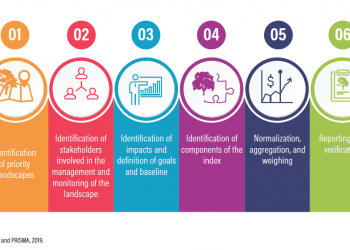by David R. Baker, Bloomberg
Plenty of people, it seems, have plans for PG&E Corp.
Even before the California utility giant filed for bankruptcy facing $30 billion in potential liabilities from wildfires, state regulators began studying whether it needed to be reformed, restructured or even taken over by the government. They asked interested parties — city officials, unions, consumer groups and trade associations — to chime in.
More than a dozen did, sketching out competing visions for PG&E in comments to the California Public Utilities Commission. Some want the utility owner broken up. A few urge government control. Others think PG&E should sell its power plants and focus solely on maintaining and upgrading the grid. The company, meanwhile, filed its own comments, addressing all those ideas but taking pains not to endorse or reject any single path forward.
“We’re open to a range of solutions that will help make the energy system safer,” PG&E spokeswoman Lynsey Paulo said in an email.
Nothing But Wires
The most common refrain was that PG&E should become a pure transmission — or “wires only” — company. A coalition of seven municipal groups that buy power on behalf of their citizens filed comments proposing that vision. So did Shell Energy North America, a division of the European oil giant that works with the groups to line up power purchase agreements. The move, they argued, would sharpen PG&E’s focus on safety after its wires have come under investigation for sparking deadly wildfires, pushing the company into Chapter 11.
PG&E backs exploring the idea but argues it would be more complex than proponents realize. While PG&E buys some power from other companies, it continues to generate electricity through a nuclear plant, 66 hydroelectric facilities, three gas-fired plants and 13 solar power facilities, according to the company’s filing.
Those would need to be sold except for the Diablo Canyon nuclear plant, which is scheduled to close in 2025. Plus, if PG&E no longer supplies power, state regulators would have to designate another company as the “provider of last resort” to supply electricity if other generators go out of business.
Go Small
Many of the commenters argued for splitting PG&E into pieces, saying regional utilities would be more responsive to customers. One of the unions representing PG&E employees — the Engineers and Scientists of California, Local 20 — pushed back, saying a breakup would trigger an exodus of skilled employees.
In its own comments, PG&E said big utilities are best positioned to meet California’s clean-energy goals. A breakup could also sock some customers with higher bills, since the costs of providing electricity service and the risk of wildfires varies by region. Besides, each regional entity would need to set up its own control and backup centers, which cost “at least $100 million” per utility, PG&E said.
“Larger utilities have better access to resources, and hence greater ability to raise capital,” the company said in its filing.
PG&E’s stock, which traded near $50 before Northern California’s deadly Camp Fire broke out in November, has climbed 50 percent since the company filed for Chapter 11 on Jan. 29. But it remains far below its pre-fire level. Shares rose 2.1 percent Wednesday to $18.12.
Get Rid of Gas
The City Attorney of San Francisco and Marin Clean Energy, which buys power for homes and businesses in Marin and Napa counties, were among those that said PG&E should sell its natural gas business — a move the company has already considered, people familiar with the matter said in January. In its filing with regulators, PG&E calls splitting the gas and electricity businesses “feasible.” But the company noted challenges.
For example, while the electricity business could be carved into regional utilities, the gas transmission and distribution network cannot, according to the company. Plus, separating it from PG&E’s electricity business could drive up bills for customers, since the new gas business would need to replicate some business functions currently shared with the electricity operation.
“While separation of PG&E’s gas and electric operations would present a number of challenges, PG&E is prepared to explore this possibility,” the company said in its filing.
Protect the Renewable Energy Contracts
NextEra Energy Inc., the world’s biggest wind and solar company, also weighed in, focusing its comments on a key issue for the company: preventing PG&E from unraveling power purchase agreements. As it wends its way through bankruptcy, PG&E may try to shed expensive wind and solar contracts signed when clean energy cost far more than it does today. NextEra urged the commission to keep those agreements, called PPAs, intact — no matter what happens to PG&E.
“One fundamental principle should be to preserve and protect the fleet of renewable generation resources that were built and financed in reliance on long-term PPAs with PG&E,” NextEra wrote.





